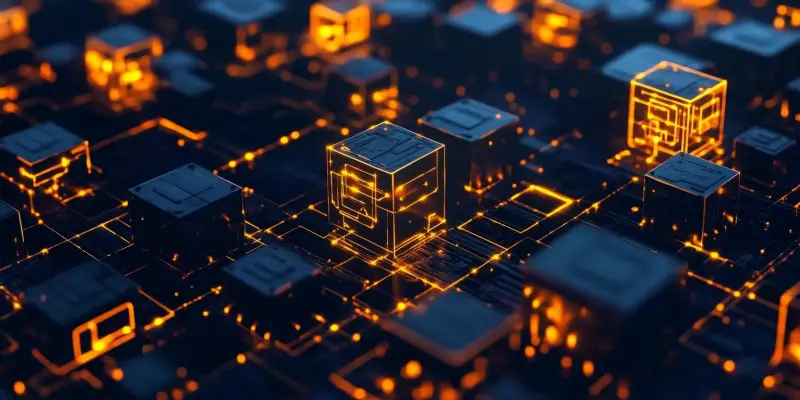The rapid integration of artificial intelligence (AI) and blockchain technology is paving the way for groundbreaking advancements in Web3 development, fundamentally transforming the landscape of decentralized applications and digital ecosystems. As developers seek innovative solutions to enhance the efficiency, security, and scalability of decentralized networks, the convergence of AI and blockchain is emerging as a game-changer. This dynamic pairing offers unprecedented capabilities, bridging the gap between intelligent automation and robust, transparent data structures. By harnessing the power of real-time AI multi-agent systems and comprehensive blockchain data streams, the development of decentralized applications (dApps) can reach new heights in performance and adaptability.
Enhancing Decentralized Application Development
The partnership between Euler and Unmarshal exemplifies the potential of combining AI with blockchain technology to push the boundaries of decentralized application development. At the heart of Euler’s innovation is the SVM AI Layer, which drives autonomous AI systems capable of operating in real-time. This advanced AI layer enables the creation of dApps that can dynamically adapt to changing conditions using accurate and timely data. Unmarshal’s blockchain data infrastructure provides the necessary tools and frameworks, such as the Xscan MultiChain Explorer and a no-code smart contract indexing solution through its parser interface. These features offer developers seamless access to live data from over 50 blockchain networks, catering to diverse sectors including decentralized finance (DeFi), non-fungible tokens (NFTs), and blockchain gaming.
A critical aspect of this collaboration is lowering the barriers to entry for developers by providing accessible, real-time data and adaptive intelligence tools. This approach empowers developers to build highly efficient and responsive dApps, capable of making context-aware decisions and smoothly adjusting to on-chain conditions. The integration of real-time data streams enhances transparency and trust, which are crucial for the success of decentralized projects. By leveraging Unmarshal’s comprehensive data solutions, developers can ensure their applications perform optimally while maintaining the highest standards of integrity.
Real-Time AI and Blockchain Synergy
The synergy between Euler’s AI capabilities and Unmarshal’s blockchain data solutions represents a significant leap forward in Web3 development. The SVM AI Layer within Euler’s technology offers a foundation for creating intelligent systems that can process and respond to extensive blockchain data in real-time. This level of autonomy is particularly beneficial for applications like decentralized physical infrastructure networks (DePIN), tokenized real-world assets (RWA), and AI-driven ecosystems. By integrating AI with blockchain, developers can craft applications that not only function efficiently but also adapt to evolving data inputs.
Unmarshal’s contribution to this partnership lies in its robust infrastructure, which includes tools designed to facilitate live, no-code smart contract indexing. This functionality simplifies the development process, allowing developers to focus on creating innovative applications without being bogged down by the complexities of data integration. The availability of accurate, real-time data across multiple blockchain networks ensures that applications remain relevant and effective, fostering an environment of continuous improvement and innovation. This collaboration underscores the importance of real-time data accessibility and adaptive intelligence in shaping the future of Web3 development.
Driving Innovation and Next-Generation Development
As the intersection of AI and blockchain continues to evolve, the collaboration between Euler and Unmarshal sets the stage for significant advancements in the field. By combining their expertise, they aim to empower the next generation of developers working on DePIN development, RWA tokenization, and autonomous AI platforms. This strategic partnership is not just about combining technologies but about fostering an ecosystem where innovation can thrive. The integration of AI capabilities with blockchain data infrastructures promotes a more intelligent, scalable, and data-driven Web3 ecosystem. This trend towards merging AI with blockchain highlights the increasing need for scalable, transparent, and efficient systems in the decentralized space. The focus on autonomy, performance, and transparency positions Euler and Unmarshal as leaders in this rapidly evolving sector. Their collaboration is expected to drive the next phase of decentralized technology evolution, providing developers with the tools and frameworks needed to push the boundaries of what is possible in Web3 development.
A New Era of Web3 Development
The rapid integration of artificial intelligence (AI) with blockchain technology is driving groundbreaking advancements in Web3 development, fundamentally transforming decentralized applications and digital ecosystems. As developers search for innovative methods to improve the efficiency, security, and scalability of decentralized networks, the convergence of AI and blockchain is proving to be a game-changer. This dynamic combination provides unprecedented capabilities, bridging the gap between intelligent automation and robust, transparent data architectures. Leveraging the power of real-time AI multi-agent systems and extensive blockchain data streams allows the development of decentralized applications (dApps) to achieve new levels of performance and adaptability. By merging these technologies, developers can create smarter, more secure, and highly efficient systems that push the boundaries of what’s possible in decentralized digital environments. This synergy sets the stage for more advanced, responsive, and resilient decentralized applications that can effectively meet the evolving demands of the digital world.

